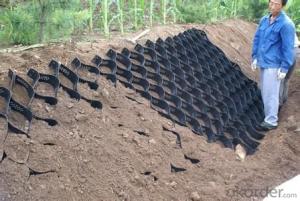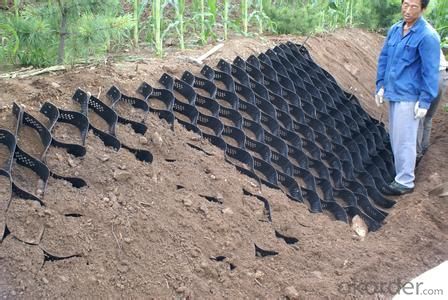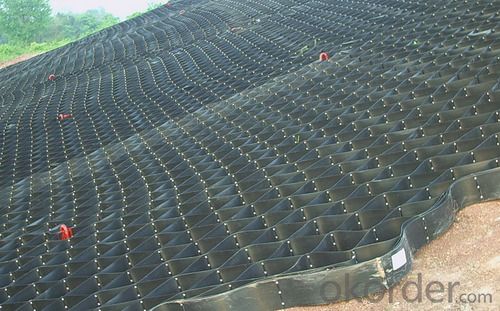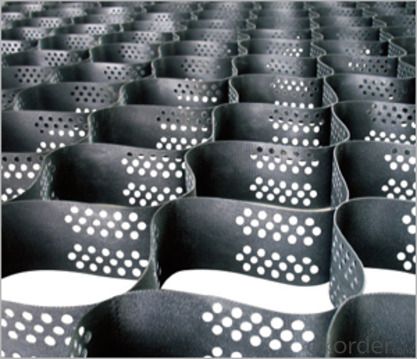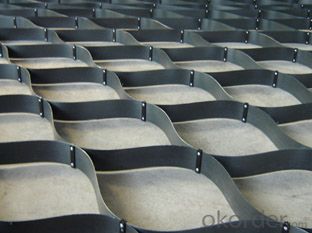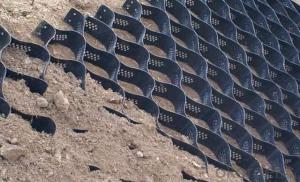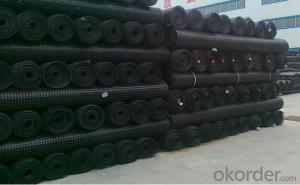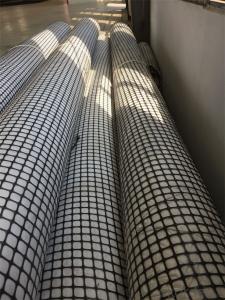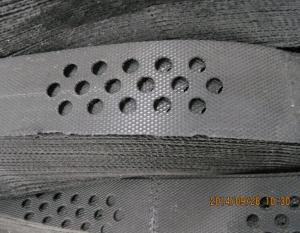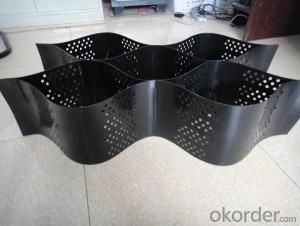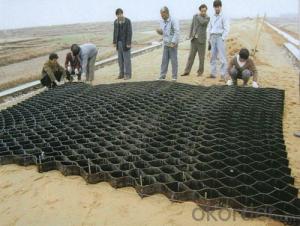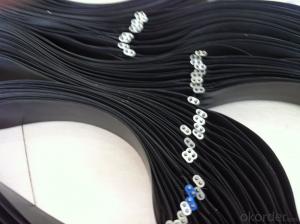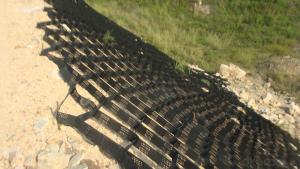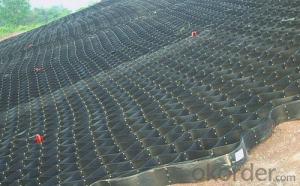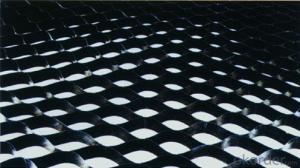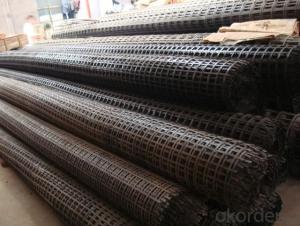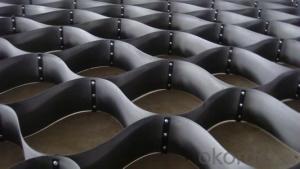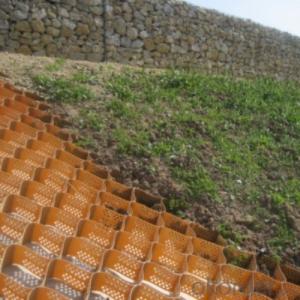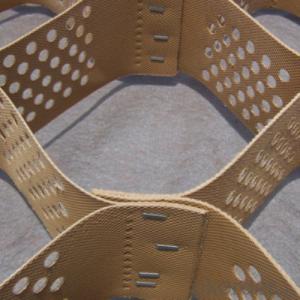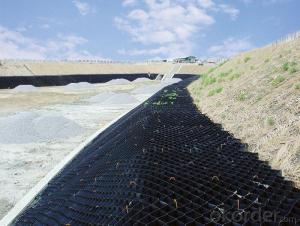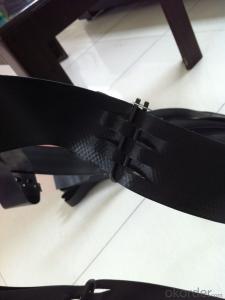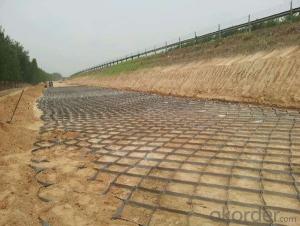HDPE Geocell with CE Certificate for Road construction
- Loading Port:
- Qingdao
- Payment Terms:
- TT OR LC
- Min Order Qty:
- 10000 m²
- Supply Capability:
- 300000 m²/month
OKorder Service Pledge
OKorder Financial Service
You Might Also Like
Description Of HDPE Geocell
HDPE Geocell is a new type of high-strength geosynthetics, which is popular in domestic and abroad. It is a kind of three-dimensional network structure shaped by high-strength HDPE sheets through ultrasonic welding of high strength. Currently, it is being widely used in construction, such as highway, railway, bridge, dyke, etc.
Main Features of HDPE Geocell
1.Light weight, wear-resistant, chemical stability, light oxidation aging, anti-acid/alkali corrosion, applied to different geological conditions, such as saline soil, desert, etc.
2.Wide temperature range, high tensile strength, good rigidity and toughness, good load capacity and anti-erosion ability.
3.Size is relatively stable, change the height and welding distance can meet the needs of different projects.
4.Retractile, easy to transport.
5.Easy to use, can use the local materials and achieve rapid construction, reduce construction costs.
6.Can be used repeatedly.
Specifications of HDPE Geocell
Product Type | Height(mm) | Welding Distance(mm) | Thickness (mm) | Seam Peel Strength of Welding Points(N/cm) | Tensile Strength of Connection of Cells(N/cm) | Tensile Strength at Yield of Each Sheet(N/Mpa) |
Flat and Not Perforated | 50≤H≤250 | 330≤A≤1000 | 1.1/1.2 | ≥100 | ≥120 | ≥20 |
Flat and Perforated | 50≤H≤250 | 330≤A≤1000 | 1.1/1.2 | ≥100 | ≥120 | ≥20 |
Embossed and Not Perforated | 50≤H≤250 | 330≤A≤1000 | 1.5 | ≥100 | ≥120 | ≥20 |
Embossed and Perforated | 50≤H≤250 | 330≤A≤1000 | 1.5 | ≥100 | ≥120 | ≥20 |
Remarks: Width of the product can be made according to the customer’s demand, and the other special standards will be carried out by agreement or contact. (The product has passed CE & GOST-R & SGS certification) | ||||||
Applications of HDPE Plastic Geocell
1.To stable the roadbed of highway/railway.
2.To bear the load of dyke, retaining wall.
3.To improve the watercourse of shallow river.
4.To support the pipeline and sewer.
5.To be used as independent wall, wharf and breakwater, etc..
6.To be used for the regulation of the desert, beaches, river bed and river bank.
IMages of HDPE Geocell
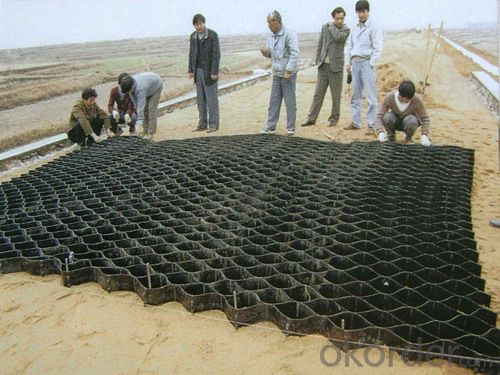
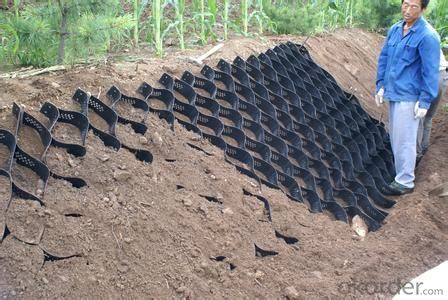
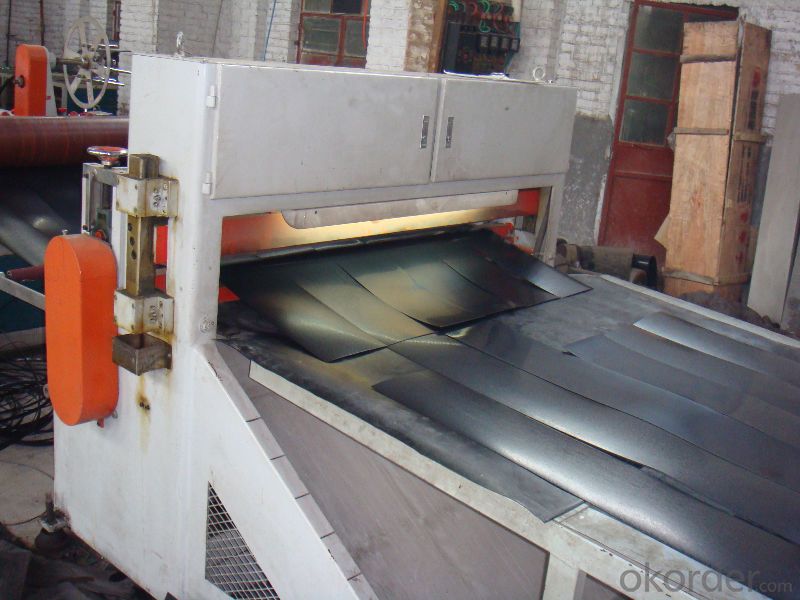
RFQ:
Q1:Can you provide a sample for us?
A:yes,we can provide for your free samples based on freight collect.
Q2:What is your MOQ?
A:MOQ is 10000sqm.
Q3:What is payment terms?
A:T/T,L/C
Q4:What is your lead time?
A:According to your order quantity,usually 7days for 1*40HC
Q5:Do the customized design accepted?
A:We welcome customized design.
- Q: Can geocells be used for wildlife crossing structures?
- Yes, geocells can be used for wildlife crossing structures. Geocells provide a stable and permeable surface that can be installed over existing terrain to create safe passages for wildlife. These structures allow animals to safely cross roads or other obstacles, reducing the risk of collisions and promoting habitat connectivity. Geocells can be filled with soil, gravel, or other natural materials to create a suitable environment for plants and animals to thrive. Overall, geocells are an effective and environmentally friendly solution for wildlife crossing structures.
- Q: Are geocells suitable for use in seawall construction?
- Yes, geocells are suitable for use in seawall construction. Geocells provide an effective and durable solution for reinforcing and stabilizing soil in coastal areas. They enhance the stability of the seawall structure, prevent erosion, and offer long-term protection against wave forces. Additionally, geocells are easy to install, cost-effective, and environmentally friendly, making them a suitable choice for seawall construction.
- Q: How do geocells improve the performance of geotechnical structures?
- Geocells improve the performance of geotechnical structures by providing reinforcement and confinement to the surrounding soil, increasing its load-bearing capacity and stability. They also help in controlling soil erosion, promoting vegetation growth, and reducing the overall maintenance and construction costs of the structures.
- Q: Can geocells be used for retaining walls in flood-prone areas?
- Yes, geocells can be used for retaining walls in flood-prone areas. Geocells are typically made of high-strength geosynthetics and can provide strong reinforcement and stability to the soil. They can help prevent soil erosion and provide effective flood control. Additionally, geocells can be filled with various materials, such as gravel or soil, which can further enhance their ability to withstand floodwaters.
- Q: What are the limitations of geocells?
- Some limitations of geocells include their susceptibility to damage from heavy loads, their need for proper installation and maintenance, and their limited effectiveness in areas with high groundwater levels. Additionally, geocells may not be suitable for extremely soft or expansive soils, and they may not provide adequate stability for steep slopes or areas prone to erosion.
- Q: How do geocells enhance the stability of highway embankments in earthquake-prone regions?
- Geocells enhance the stability of highway embankments in earthquake-prone regions by providing reinforcement and confinement to the soil or fill material. The interconnected cells create a robust structure that increases the lateral resistance of the embankment, reducing the potential for slope failure during seismic events. Additionally, geocells help distribute and dissipate the seismic forces, reducing the overall impact on the embankment and enhancing its resilience.
- Q: How do geocells contribute to the reinforcement of soils?
- Geocells contribute to the reinforcement of soils by confining and stabilizing the soil particles within their cell walls, which helps to increase the load-bearing capacity, improve soil stability, and prevent soil erosion. Additionally, the geocell structure provides a flexible and permeable foundation for various applications such as road construction, slope protection, and erosion control, enhancing the overall performance and longevity of the soil.
- Q: Can geocells be used in mine tailings containment?
- Yes, geocells can be used in mine tailings containment. Geocells are a proven and effective solution for stabilizing and containing various types of materials, including mine tailings. They provide a strong and flexible structure that helps prevent erosion and containment breaches, ensuring the safety and integrity of the mine tailings containment system.
- Q: Can geocells be used in landscaping projects?
- Yes, geocells can be used in landscaping projects. Geocells are often used to stabilize and reinforce soil in various applications, including landscape construction. They can be used to create retaining walls, reinforce slopes, and provide stability to pathways, driveways, and parking areas. Geocells help to prevent soil erosion, improve drainage, and enhance the overall durability and longevity of landscaping structures.
- Q: How do geocells help with embankment reinforcement?
- Geocells help with embankment reinforcement by providing a stable and strong structure that prevents soil erosion and slope failure. They confine and stabilize the soil within their interconnected cells, increasing its bearing capacity and resistance to lateral movement. This reinforcement technique also promotes vegetation growth, further enhancing the embankment's stability and sustainability.
Send your message to us
HDPE Geocell with CE Certificate for Road construction
- Loading Port:
- Qingdao
- Payment Terms:
- TT OR LC
- Min Order Qty:
- 10000 m²
- Supply Capability:
- 300000 m²/month
OKorder Service Pledge
OKorder Financial Service
Similar products
Hot products
Hot Searches
Related keywords
